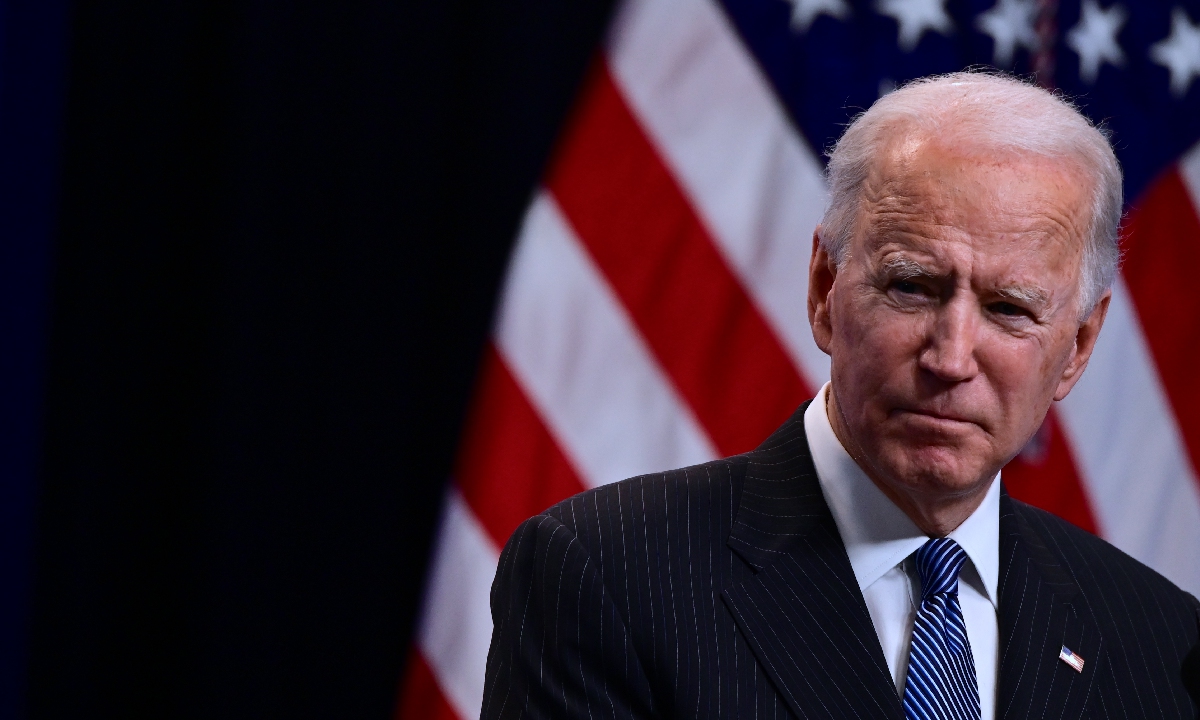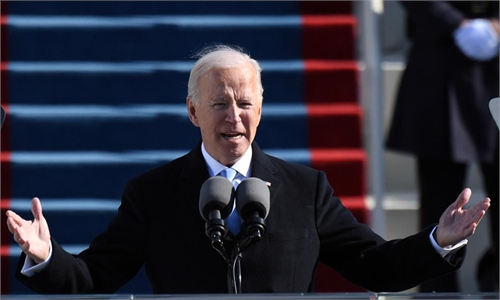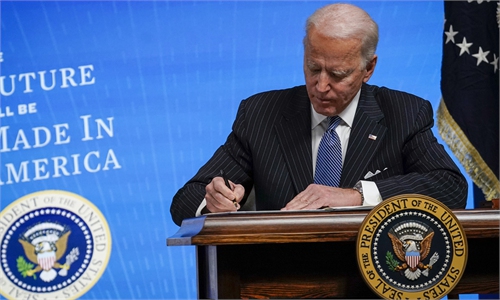Republicans push back at Biden’s relief
Package for alternative stimulus poses hurdle for new administration

US President Joe Biden answers questions from the media after signing a "Made in America" Executive Order in the South Court Auditorium at the White House on January 25, 2021 in Washington.Photo: AFP
US President Joe Biden met Monday with a group of Republican senators who are pushing an alternative to his massive COVID-19 relief plan, but no agreement was reached.Biden, who campaigned on restoring bipartisanship in Washington DC, wants to spend $1.9 trillion on revitalizing the world's largest economy after the pandemic caused waves of layoffs in 2020, but Republicans in Congress have said they won't support such a large package.
On Sunday, a group of 10 Republicans detailed a measure costing $600 billion, and Biden responded with an invitation to the White House to discuss the idea.
But no agreement was at hand following the meeting, which Republican Senator Susan Collins described as "frank and very useful," if not conclusive.
"I wouldn't say that we came together on a package tonight. No one expected that in a two-hour meeting," she said.
For its part, the White House said its package "was carefully designed to meet the stakes of this moment, and any changes in it cannot leave the nation short of its pressing needs."
An outline of the Republican proposal shows it excludes aid to state and local governments that Democrats say any package must have. It also gives out stimulus checks of $1,000, less than the $1,400 Biden has proposed, and tightens eligibility.
Democratic leaders responded to the proposal by announcing they were moving ahead with a maneuver in Congress to pass the president's plan without Republican votes, while Biden took to Twitter to restate his case.
"We're facing an economic crisis brought on by a public health crisis, and we need urgent action to combat both," he said.
In a sign of the economy's ill health, the government last week said that the number of new applications for unemployment aid received each week was at 1.3 million, an enormous figure 10 months after business shutdowns began.
It also released data showing the country in 2020 suffered its worst contraction since 1946, with the economy shrinking 3.5 percent.
Yet it may be bouncing back faster than expected.
On Monday, the Congressional Budget Office said it expected GDP to reach its pre-pandemic level by the middle of 2021, "in large part because the downturn was not as severe as expected and because the first stage of the recovery took place sooner and was stronger than expected."
However, employment will take longer to recover, and while the nonpartisan office serving Congress expected the unemployment rate to gradually decline through 2026, it did not forecast when it would return to the historically low level it hit before the pandemic.
AFP



